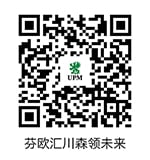1. Tailored minimalism
In the future packaging design, less is more. There is a growing demand for solutions that address the problem of overpackaging. This is demonstrated by the actions and opinions of consumers, environmental groups, and legislators. In Europe, shops have faced campaigns where customers are encouraged to report unnecessary packaging or return excessive packaging to stores.
While products are currently well-protected, excess raw materials are wasted. Another issue is that packaging often includes multiple material layers, which makes the packages them difficult to recycle. There are many examples in food and non-food segments where brand owners still specify complex packing materials and yet more sustainable solutions, like recyclable and even compostable barrier papers could be used instead.
The food industry is looking more and more towards sustainable packing solutions. For instance frozen baked goods require packaging that offers light grease and moisture resistance while maintaining the freshness of the baked goods inside. Plastic bags have been used inside cardboard boxes to ensure food safety and quality requirements. It is now possible, for example, to replace the plastic bag with a barrier paper inner liner in the corrugated cardboard box. The barrier paper complies with European food safety standards, allowing baked goods to be in direct contact with the inner liner.
2. Return of the reusable packaging
It would be an understatement to call recyclability a packaging trend as it is the main driver in packaging design at the moment. In addition to recyclable and recycled packaging materials, there will be more and more reusable packages in the future. In the EU, all packaging has to be recyclable, certain formats also reusable by 2030, according to the new packaging regulation. This applies particularly to the B2C businesses. In the B2B sector, reusable packaging solutions are already widely used.
Reusable packaging isn’t a new concept – it dates back to milk delivered in glass bottles and wooden containers in early grocery stores. During the 1880s, most packaging in North America was reused. However, for decades, single-use, disposable packaging has dominated the markets. In 2021, the EU generated over 180 kilograms of packaging waste per inhabitant – over 30 kilograms more than just ten years before.
On a larger scale, reusability will require some level of standardization. This means that potentially all products within the same category might be sold in identical reusable packaging. When recycled, the old label gets washed off and then replaced with a new one. This will present an exciting challenge for label designers, as the label will be the star of the packaging and the only element that makes the product stand out on the store shelves. For example, UPM Raflatac offers a range of wash-off labels in clear, metallised and white film that can be used for a variety of designs.
